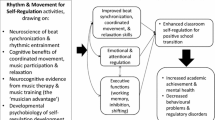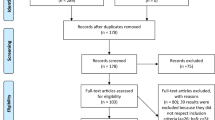Abstract
Both genetic and environmental factors are known to play a role in our ability to perceive music, but the degree to which they influence different aspects of music cognition is still unclear. We investigated the relative contribution of genetic and environmental effects on melody perception in 384 young adult twins [69 full monozygotic (MZ) twin pairs, 44 full dizygotic (DZ) twin pairs, 70 MZ twins without a co-twin, and 88 DZ twins without a co-twin]. The participants performed three online music tests requiring the detection of pitch changes in a two-melody comparison task (Scale) and key and rhythm incongruities in single-melody perception tasks (Out-of-key, Off-beat). The results showed predominantly additive genetic effects in the Scale task (58 %, 95 % CI 42–70 %), shared environmental effects in the Out-of-key task (61 %, 49–70 %), and non-shared environmental effects in the Off-beat task (82 %, 61–100 %). This highly different pattern of effects suggests that the contribution of genetic and environmental factors on music perception depends on the degree to which it calls for acquired knowledge of musical tonal and metric structures.

Similar content being viewed by others
References
Baharloo S, Service SK, Risch N, Gitschier J, Freimer NB (2000) Familial aggregation of absolute pitch. Am J Hum Genet 67(3):755–758
Bigand E, Poulin-Charronnat B (2006) Are we “experienced listeners”? A review of the musical capacities that do not depend on formal musical training. Cognition 100(1):100–130
Boomsma DI, Busjahn A, Peltonen L (2002) Classical twin studies and beyond. Nat Rev Genet 3(11):872–882
Brattico E, Tervaniemi M, Näätänen R, Peretz I (2006) Musical scale properties are automatically processed in the human auditory cortex. Brain Res 1117(1):162–174
Chang H, Trehub SE (1977) Auditory processing of relational information by young infants. J Exp Child Psychol 24(2):324–331
Coon H, Carey G (1989) Genetic and environmental determinants of musical ability in twins. Behav Genet 19(2):183–193
Corrigall KA, Trainor LJ (2010) Musical enculturation in preschool children: acquisition of key and harmonic knowledge. Music Percept 28(2):195–200
Deary IJ, Johnson W, Houlihan LM (2009) Genetic foundations of human intelligence. Hum Genet 126(1):215–232
Dominicus A, Skrondal A, Gjessing HK, Pedersen NL, Palmgren J (2006) Likelihood ratio tests in behavioral genetics: problems and solutions. Behav Genet 36(2):331–340
Drayna D, Manichaikul A, de Lange M, Snieder H, Spector T (2001) Genetic correlates of musical pitch recognition in humans. Science 291(5510):1969–1972
Gingras B, Honing H, Peretz I, Trainor LJ, Fisher SE (2015) Defining the biological bases of individual differences in musicality. Philos Trans R Soc Lond B Biol Sci 370(1664):20140092
Goldsmith HH (1991) A zygosity questionnaire for young twins: a research note. Behav Genet 21(3):257–269
Hannon EE, Johnson SP (2005) Infants use meter to categorize rhythms and melodies: implications for musical structure learning. Cogn Psychol 50(4):354–377
Hausen M, Torppa R, Salmela VR, Vainio M, Särkämö T (2013) Music and speech prosody: a common rhythm. Front Psychol 4(566):1–16
Janata P (2015) Neural basis of music perception. Handb Clin Neurol 129:187–205
Kalmus H, Fry DB (1980) On tune deafness (dysmelodia): frequency, development, genetics and musical background. Ann Hum Genet 43(4):369–382
Kaprio J (2013) The Finnish Twin Cohort Study: an update. Twin Res Hum Genet 16(1):157–162
Kaprio J, Pulkkinen L, Rose RJ (2002) Genetic and environmental factors in health-related behaviors: studies on Finnish twins and twin families. Twin Res 5(5):366–371
Krumhansl CL (2000) Rhythm and pitch in music cognition. Psychol Bull 126(1):159–179
Lee T, Henry JD, Trollor JN, Sachdev PS (2010) Genetic influences on cognitive functions in the elderly: a selective review of twin studies. Brain Res Rev 64(1):1–13
Menne-Lothmann C, Jacobs N, Derom C, Thiery E, van Os J, Wichers M (2012) Genetic and environmental causes of individual differences in daily life positive affect and reward experience and its overlap with stress-sensitivity. Behav Genet 42(5):778–786
Mosing MA, Madison G, Pedersen NL, Kuja-Halkola R, Ullen F (2014a) Practice does not make perfect: no causal effect of music practice on music ability. Psychol Sci 25(9):1795–1803
Mosing MA, Pedersen NL, Madison G, Ullén F (2014b) Genetic pleiotropy explains associations between musical auditory discrimination and intelligence. PLoS One 9(11):e113874
Neale M (2004) Mx software. Virginia Commonwealth University, Richmond
Neale M, Cardon L (1992) Methodology for genetic studies of twins and families. Kluwer Academic Publishers, Dordrecht
Oikkonen J, Huang Y, Onkamo P, Ukkola-Vuoti L, Raijas P, Karma K et al (2015) A genome-wide linkage and association study of musical aptitude identifies loci containing genes related to inner ear development and neurocognitive functions. Mol Psychiatry 20(2):275–282
Peretz I, Champod AS, Hyde K (2003) Varieties of musical disorders. Ann N Y Acad Sci 999(1):58–75
Peretz I, Cummings S, Dubé M (2007) The genetics of congenital amusia (tone deafness): a family-aggregation study. Am J Hum Genet 81(3):582–588
Peretz I, Gosselin N, Tillmann B, Cuddy LL, Gagnon B, Trimmer CG et al (2008) On-line identification of congenital amusia. Music Percept 25(4):331–343
Polderman TJ, Benyamin B, de Leeuw CA, Sullivan PF, van Bochoven A, Visscher PM et al (2015) Meta-analysis of the heritability of human traits based on fifty years of twin studies. Nat Genet 47(7):702–709
Posthuma D, Beem AL, De Geus EJC, van Baal CM, von Hjelmborg JB, Iachine I et al (2003) Theory and practice in quantitative genetics. Twin Res 6(5):361–376
Saarikallio S, Hausen M, Särkämö T, Tervaniemi M (submitted) If you love music you can hear the beat: daily music engagement relates to temporal abilities of music perception
Samson F, Zeffiro TA, Toussaint A, Belin P (2011) Stimulus complexity and categorical effects in human auditory cortex: an activation likelihood estimation meta-analysis. Front Psychol 1:241
Sarna S, Kaprio J, Sistonen P, Koskenvuo M (1978) Diagnosis of twin zygosity by mailed questionnaire. Hum Hered 28(4):241–254
Stokes PR, Shotbolt P, Mehta MA, Turkheimer E, Benecke A, Copeland C et al (2013) Nature or nurture? Determining the heritability of human striatal dopamine function: an [18F]-DOPA PET study. Neuropsychopharmacology 38(3):485–491
Tillmann B, Bharucha JJ, Bigand E (2000) Implicit learning of tonality: a self-organizing approach. Psychol Rev 107(4):885–913
Trainor LJ, Corrigall KA (2010) Music acquisition and effects of musical experience. In: Fay RR, Popper AN (eds) Springer handbook of auditory research: music perception. Springer, New York, pp 89–127
Trainor LJ, Hannon EE (2012) Musical development. In: Deutsch D (ed) The psychology of music, 3rd edn. Academic Press, London, pp 423–497
Trainor LJ, Trehub SE (1992) A comparison of infants’ and adults’ sensitivity to western musical structure. J Exp Psychol Hum Percept Perform 18(2):394–402
Trehub SE, Schellenberg EG, Kamenetsky SB (1999) Infants’ and adults’ perception of scale structure. J Exp Psychol Hum Percept Perform 25(4):965–975
Trost W, Frühholz S, Schön D, Labbé C, Pichon S, Grandjean D et al (2014) Getting the beat: entrainment of brain activity by musical rhythm and pleasantness. Neuroimage 103:55–64
Ukkola LT, Onkamo P, Raijas P, Karma K, Järvelä I (2009) Musical aptitude is associated with AVPR1A-haplotypes. PLoS One 4(5):e5534
Ullén F, Mosing MA, Holm L, Eriksson H, Madison G (2014) Psychometric properties and heritability of a new online test for musicality, the Swedish Musical Discrimination Test. Pers Indiv Differ 63:87–93
Vinkhuyzen AAE, Van der Sluis S, Posthuma D, Boomsma DI (2009) The heritability of aptitude and exceptional talent across different domains in adolescents and young adults. Behav Genet 39(4):380–392
Volk HE, McDermott KB, Roediger HL 3rd, Todd RD (2006) Genetic influences on free and cued recall in long-term memory tasks. Twin Res Hum Genet 9(5):623–631
Winkler I, Haden GP, Ladinig O, Sziller I, Honing H (2009) Newborn infants detect the beat in music. Proc Natl Acad Sci USA 106(7):2468–2471
Witek MA, Clarke EF, Wallentin M, Kringelbach ML, Vuust P (2014) Syncopation, body-movement and pleasure in groove music. PLoS One 9(4):e94446
Zentner M, Eerola T (2010) Rhythmic engagement with music in infancy. Proc Natl Acad Sci USA 107(13):5768–5773
Acknowledgments
We would like to thank Anja Häppölä and Kauko Heikkilä for their invaluable help in data collection and Viljami Salmela for assistance on statistical analyses. Data collection of FinnTwin16 has been supported by the National Institute of Alcohol Abuse and Alcoholism (AA-12502, AA-00145, AA-09203) and by the Academy of Finland (100499, 205585, 118555, 141054, 264146). Additional support for the present work was provided by the Paolo Foundation, Finland, and the Academy of Finland (AoF) Post-Doctoral (257077, 257075) and Academy Professor (265240, 263278) programs.
Author information
Authors and Affiliations
Corresponding author
Ethics declarations
Conflict of Interest
Erik Seesjärvi, Teppo Särkämö, Eero Vuoksimaa, Mari Tervaniemi, Isabelle Peretz, and Jaakko Kaprio declare that they have no conflict of interest.
Human and Animal Rights and Informed Consent
All procedures performed in studies involving human participants were in accordance with the ethical standards of the institutional and/or national research committee and with the 1964 Helsinki declaration and its later amendments or comparable ethical standards. Informed consent was obtained from all individual participants included in the study.
Additional information
Edited by Yoon-Mi Hur
Electronic supplementary material
Below is the link to the electronic supplementary material.
Rights and permissions
About this article
Cite this article
Seesjärvi, E., Särkämö, T., Vuoksimaa, E. et al. The Nature and Nurture of Melody: A Twin Study of Musical Pitch and Rhythm Perception. Behav Genet 46, 506–515 (2016). https://doi.org/10.1007/s10519-015-9774-y
Received:
Accepted:
Published:
Issue Date:
DOI: https://doi.org/10.1007/s10519-015-9774-y




